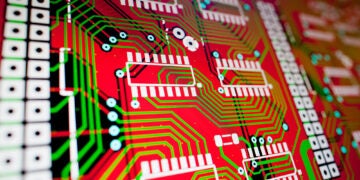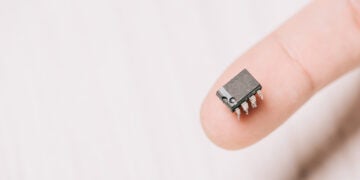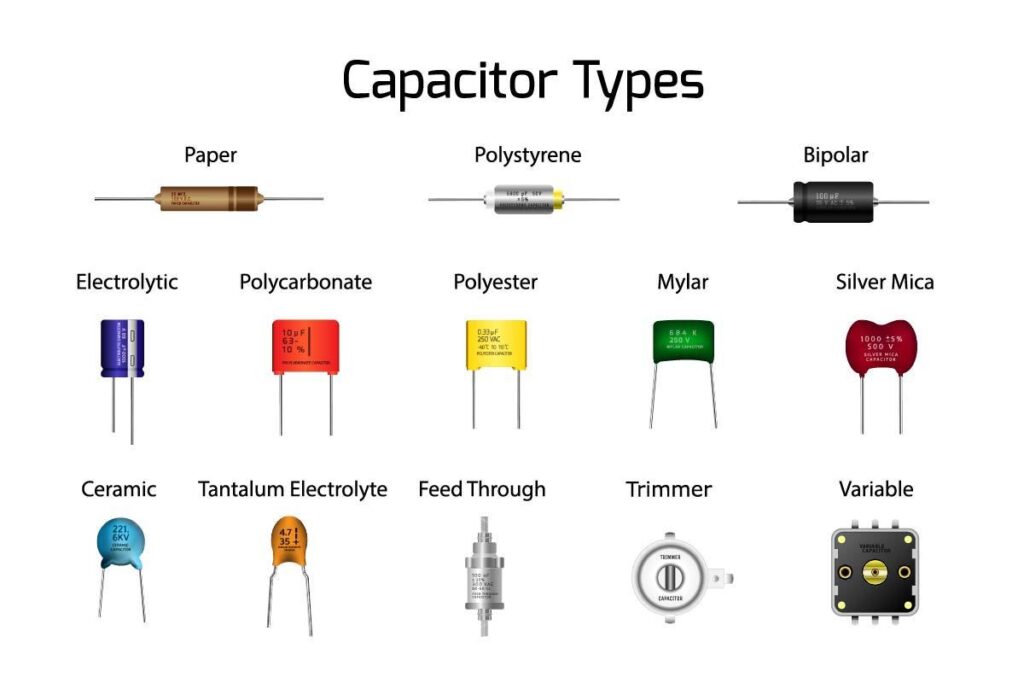
Anyone new to PCB design may have this misconception that to select a capacitor, you need the voltage and capacitance requirements of the circuit. Using a capacitor beyond its voltage or capacitance limit may cause the device to fail.
However, choosing the suitable capacitor takes into account a lot of other factors such as temperature, ESR, resonance, dissipation factor, and more. If you miss any one of the important factors, your design may still fail. So let’s know them all.
Factors to Consider for Choosing the Right Capacitor
Here are some essential elements that engineers consider while choosing the right capacitor for their design.
Dielectric Permittivity
A capacitor is a passive element that temporarily stores electric charge from an internal electric field source before dissipating it through a load again. It consists of two metallic plates separated by a dielectric material, as shown below.
The capacitance can be calculated using the formula:
 Here:
Here:
C= capacitance
= dielectric permittivity
A= Plate area in sq meters
d= distance between plates in meters
Choosing capacitors with high dielectric strength offers high capacitance.
The table below shows characteristics of common capacitor types, sorted by dielectric materials.
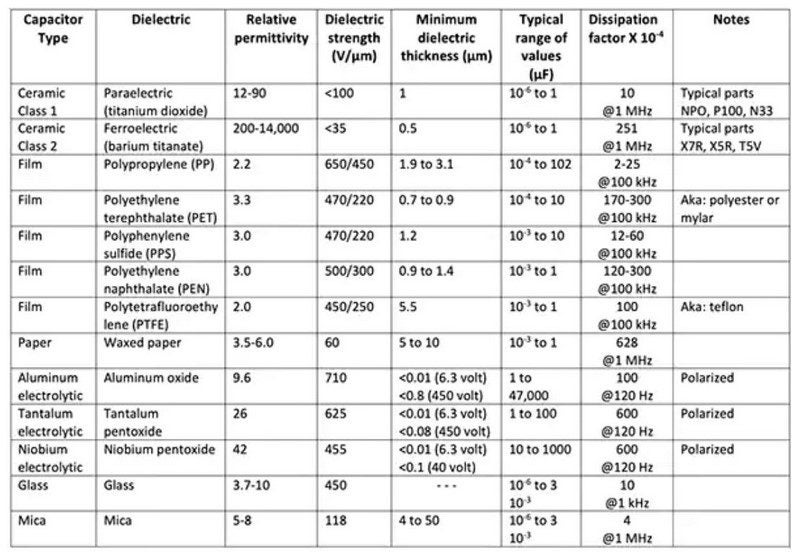
Table Source: Digikey Electronics
Temperature
Every capacitor has a specific operational temperature limit mentioned on the package. Beyond that temperature limit, the insulation around the dielectric starts to degrade and may cause electrolyte loss and leakage current.
Here is a quick comparison of three popular types of capacitor based on their maximum operating temperature.
| Capacitor Type | Max Operating Temp |
| Aluminum electrolytic capacitors | 85°C up to 150°C |
| Film capacitors | max. 110°C |
| Multilayer ceramic capacitors | 85°C up to 200°C |
Thus, selecting a capacitor that can safely operate under the maximum operating temperature of the application is always imperative.
Effective Series Resistance
It has always been a surprise for engineers to know that the equivalent circuit of a capacitor includes an effective serial resistance (ESR) and an effective serial inductance (ESL), as shown below. The internal resistance is because of the materials, design, and manufacturing process.
The value of ESR changes with a change in frequency, like a variable capacitor. At low frequency, the ESR value is very high and decreases with the increase in frequency. It also changes with the temperature change.
The mathematical expression is as follows:
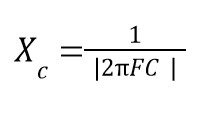
Here Xc represents the capacitive reactance, including ESR and ESL. The value is inversely proportional to the frequency of operation. Terms F and C represent frequency and capacitance, respectively.
That means, at high frequency, the capacitor offers the easiest path to the current flow. Thus, capacitors with low ESR values are always preferred. It is imperative to check the datasheet to acknowledge the best temp and frequency combination to operate the capacitor at the low ESR value possible.
Usually, the ESR of electrolytic capacitors is the highest, whereas that of film capacitors is the lowest.
Note: A same-rated capacitor but from two different manufacturers may have two different ESR values for all the same conditions.
Resonance
There is always a reduction in power of a signal when it travels through a capacitor. This is known as insertion loss. In an ideal capacitor, it increases with the increase in frequency. However, in an actual capacitor, the loss increases until the capacitor attains its self-resonance frequency (frequency at which impedance becomes zero) and then decreases.
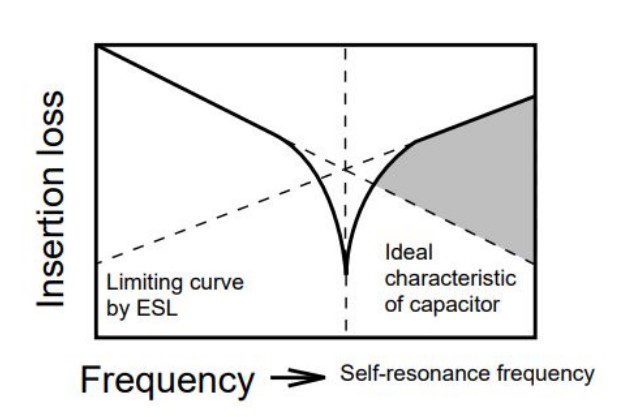
That being said, this concept is used to reduce the noise signal of a capacitor until it hits the self-resonant frequency. That’s why, in a high-frequency range, it is imperative to go for capacitors with a high self-resonance frequency (or low ESL value) for more excellent noise suppression.
Dissipation factor
Now that we know capacitors have internal resistance, it is logical to witness some power loss when an AC voltage is applied. This rate of loss is known as the dissipation factor.
The mathematical expression is as follows:
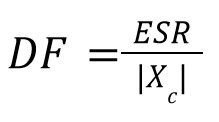
Here DF represents the dissipation factor.
If you take the datasheet of any capacitor, you will notice that for a particular temperature and frequency of operation, the capacitor has different DF values at different stages of rated voltage. Consult your CM to help you select the best capacitor for your application with the lowest DF possible.
DC Biasing
The capacitance rating mentioned on the datasheet of a capacitor is under the ideal condition without any DC supply. However, if you are considering a ceramic capacitor with a high dielectric constant, under practical application scenarios, a small DC supply can change the capacitance value. That’s called DC biasing. Under such a circumstance, you have three options:
- Go for a high capacitance value
- Use a physically larger package size
- Switch to a different type
Tolerance
The tolerance value represents the minimum and the maximum reach of a capacitor from its nominal value. A 1000µF capacitor with ±15% tolerance value can be allowed for 985µF – 1015µF application. For sensitive applications such as timing elements, capacitors with a low tolerance are preferred. However, for coupling capacitors have a wide tolerance to allow even the lowest frequencies with ease.
Polarization
Polarized capacitors (P-C) are used across the voltage in a certain polarity. The negative terminal has a negative symbol over the surface of the capacitor and has a smaller lid than the positive terminal. Aluminum electrolytic capacitors are polar capacitors and come with two lids of different lengths.
On the other hand, non-polar capacitors (N-P-C) can be connected either way in a circuit design. Ceramic capacitors, film capacitors, and electrolyte capacitors are non-polar.
P-C offers a large capacitance value in a tiny package. Also they cost significantly less than N-P-C for the same capacitance and voltage ratings. However, P-C has a large leakage current and can not operate at higher frequencies like N-P-C. While P-C finds its major application in DC circuits, N-P-C can be used in both AC and DC, low or high frequencies.
The table below shows types of capacitors and their area of application.
| Types | Characteristics | Applications |
| Ceramic |
|
|
| Electrolyte |
|
|
| Tantalum |
|
|
| Film |
|
|
| Silver Mica |
|
|
Size of Capacitor
SMD capacitors offer a low-cost large capacitance to footprint ratio with minimal parasitic inductance effect, ideal for designing high-freq or high-speed circuits. However, when it comes to offering reliability under harsh environments, through-hole capacitors are best. As they are soldered deep into the board layers, the mechanical bonding is stronger than SMD counterparts.
There are four popularly used through-hole capacitors:
- Film capacitors
- Ceramic capacitor
- Aluminum electrolytic capacitor
- Aluminum polymer capacitor
Amongst all the four, the film capacitor has the widest footprint (2.5cm long) whereas the ceramic capacitor has got the minimum (<5 mm long). The electrolytic capacitor is narrower and longer whereas the polymer one is shorter and fatter.
Through-hole electrolytic capacitors are widely used in aerospace and military applications. They are also best for prototyping and testing as well.
While choosing the right capacitor, you may also need to look for its PCB footprints, schematic symbols, verified CAD models and more. In this regard, Ultra Librarian offers a comprehensive electronics search engine to get all the essential tech data at one place, including the list of available vendors.
Working with Ultra Librarian sets up your team for success to ensure streamlined and error-free design, production, and sourcing. Register today for free.


